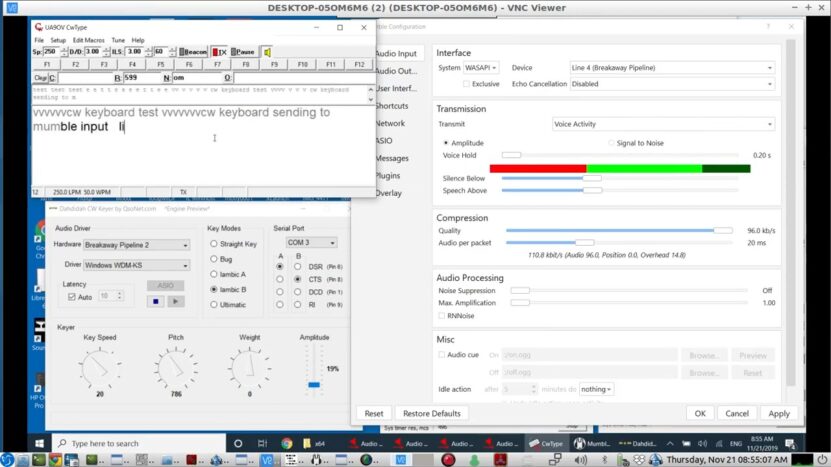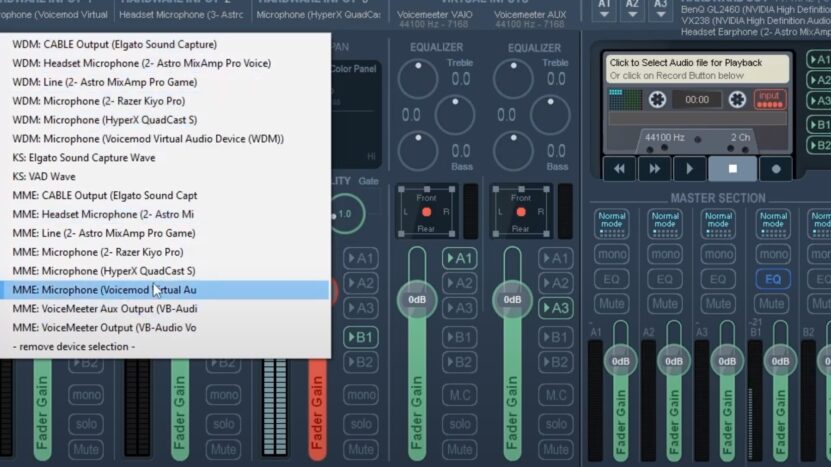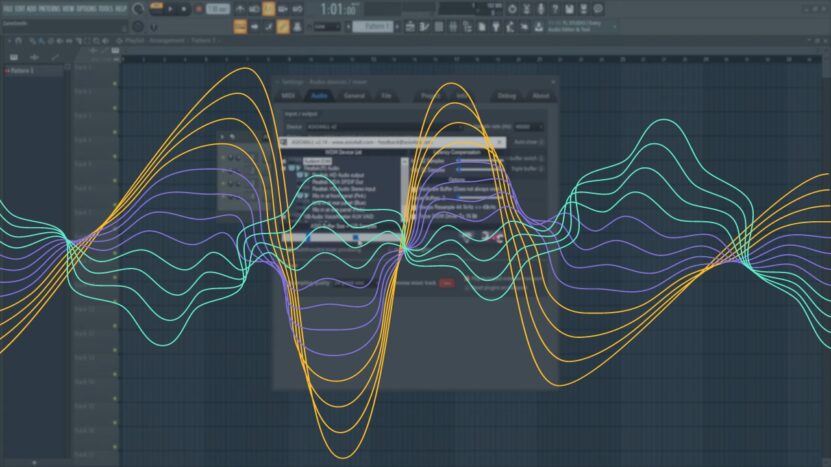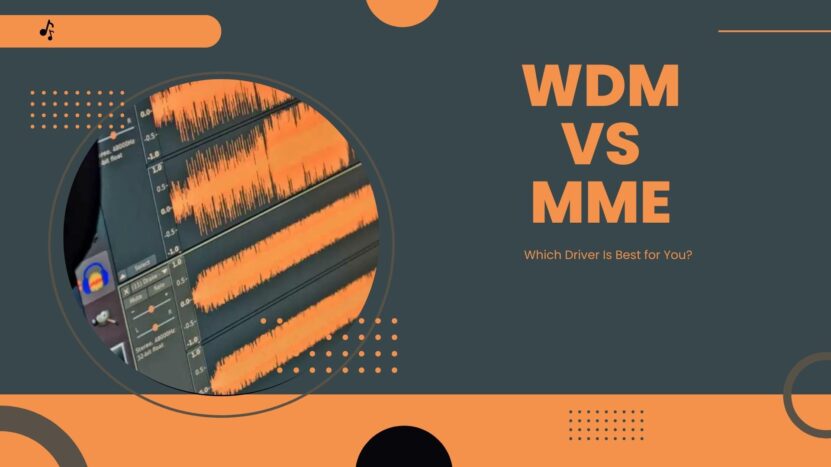As the world increasingly becomes more digitized, one arena that continues to experience significant changes is the audio industry. The crucial part of this transformation is the software drivers, responsible for ensuring the seamless transfer of audio data between a computer and its peripherals. Two dominant types of drivers in this sphere are Windows Driver Model (WDM) and Multimedia Extensions (MME).
Understanding these drivers’ functionalities, strengths, and limitations is pivotal for anyone in the audio field, whether you’re a sound engineer, a music producer, or a podcaster. Selecting the right driver can make a world of difference in the quality of your audio output and your workflow efficiency. So, let’s delve into the world of WDM and MME drivers and help you make an informed decision.
WDM and MME Drivers Explained

Windows Driver Model (WDM) is a framework developed by Microsoft to standardize the communication between software and hardware devices on a Windows operating system. The WDM audio drivers, Kernel Streaming and DirectSound, offer lower latency and are generally used in more professional audio applications. They enable high-speed data transfers and are commonly employed in high-end music production and audio editing software.
Multimedia Extensions (MME), on the other hand, were the first audio driver models available on Windows, making them the most widely compatible. MME drivers are best known for their broad compatibility, and while they offer higher latency than their counterparts, they are generally more stable, making them suitable for simpler applications or for beginners in the audio industry.
The differences between WDM and MME are primarily in their design, which impacts their performance, compatibility, and user experience. As you navigate your audio journey, it’s important to understand the unique features of each driver and how they may suit your specific needs.
Differentiating Between Them

The most significant difference between WDM and MME lies in their approach to handling audio data. While both drivers facilitate audio data transfer, they do so differently. WDM drivers handle multiple data streams concurrently, making them capable of processing large volumes of data simultaneously. This allows for smoother and faster audio processing, which is crucial for complex audio production tasks.
MME, by contrast, works on a single-stream model. This means it processes one audio data stream at a time, resulting in slower data handling. However, its simplicity provides unparalleled stability, reducing the risk of audio dropouts or other technical glitches. This makes MME drivers an excellent choice for simpler audio tasks, like podcast recording or basic music production.
The other vital differentiating factor lies in the way these drivers handle latency. WDM drivers offer lower latency, thanks to their concurrent data processing capabilities, making them ideal for real-time audio tasks. MME drivers, while offering higher latency, provide more stable performance, ensuring consistent audio output even in less-than-ideal conditions.
Performance Comparison
From a performance standpoint, WDM drivers tend to outshine MME in most regards. WDM’s ability to handle multiple data streams concurrently allows for smooth, uninterrupted audio processing, ensuring the high-quality output that professionals demand. Its low latency performance makes it a favored choice for real-time applications such as live performances or recording sessions.
MME, however, has a unique strength in its stability. While its single-stream processing method may slow down data handling, it also ensures a stable, consistent audio output, a factor that is often overlooked but can be crucial in many audio tasks. This is particularly useful in scenarios where reliability is more important than speed, such as in podcast recording or beginner-level music production.
However, performance alone cannot determine which driver is best suited for your needs. It’s also crucial to take into account factors such as compatibility, customization options, and the level of support available for each driver.
While on the topic of high-quality audio, it’s worth taking a look at this comprehensive comparison of Klipsch and Paradigm, two leading audio equipment manufacturers here.
Compatibility Factors: Which Driver Works with Your Operating System?
When it comes to compatibility, both WDM and MME have broad coverage, given their Windows-based design. However, the age and type of your hardware can influence which driver works best for you. Newer audio hardware models tend to work better with WDM, given its support for higher data transfer speeds and multi-stream processing.
MME drivers, being the first Windows audio drivers, are compatible with almost any audio hardware that you can connect to a Windows machine. This wide range of compatibility makes MME an excellent choice for those using older or less advanced hardware.
If you’re using a different operating system, like macOS or Linux, you’ll need to explore other types of audio drivers like Core Audio or ALSA, respectively. While WDM and MME are designed specifically for Windows, these other drivers offer similar functionalities for their respective operating systems.
Choosing the Right Driver for Audio Processing
In terms of audio processing, your choice between WDM and MME will largely depend on the complexity of your audio tasks and your need for low latency. If you’re working on high-level audio production tasks, such as multi-track recording or professional mixing, you’ll likely benefit from the speed and efficiency offered by WDM.
For simpler tasks, or if you’re just starting out in the world of audio production, MME may be a better choice. While it doesn’t offer the same low latency performance as WDM, it provides a more stable and user-friendly experience, which can be invaluable for beginners.
The key here is to identify your needs and evaluate how each driver can meet them. Remember, there’s no one-size-fits-all solution in the world of audio drivers. It’s all about finding the right fit for your unique situation.
Latency Considerations
Latency refers to the delay between the moment an audio signal is created and when it’s heard. In a perfect world, this would be instantaneous, but in reality, there is always some delay. Low latency is crucial for tasks that require real-time audio processing, such as live recording or performances.
WDM drivers, with their multi-stream processing, are designed for low-latency performance. This makes them a perfect choice for professional musicians, sound engineers, and other high-level audio professionals who require real-time response.
However, MME, despite having higher latency, might be a more reliable choice for those who prioritize stability over speed. The delay might be longer, but the audio output remains consistent, making MME suitable for beginners or those working with simpler audio tasks.
Stability and Reliability
Stability and reliability are paramount in the world of audio production. The last thing you want is your audio driver crashing in the middle of an important project. Here, MME shines with its proven stability. Its simplicity ensures fewer complications and a lower likelihood of encountering technical glitches.
WDM, while offering more advanced features, can be more prone to stability issues due to its complexity. However, with the right hardware and software setup, it can deliver reliable performance, especially for professionals who understand how to mitigate potential issues.
Ultimately, your choice between WDM and MME will depend on what you value most: the advanced features and speed of WDM or the proven stability and simplicity of MME.
Customization Options
When it comes to customization, WDM takes the lead. Its advanced features allow for a greater degree of control over your audio processing, allowing you to fine-tune your audio to your exact specifications. This is particularly useful for professional audio producers who need to control every aspect of their sound.
MME, on the other hand, offers fewer customization options. Its strength lies in its simplicity and broad compatibility rather than its versatility. If you’re just starting in audio production or don’t require advanced audio control, the simplicity of MME could be an advantage.
Again, it all comes down to your specific needs and the level of control you desire over your audio processing.
Driver Availability and Support

Given that both WDM and MME are Windows-based drivers, support for these drivers is readily available. Microsoft provides regular updates for both, ensuring they stay compatible with the latest Windows updates and hardware innovations.
In terms of user support, numerous online forums and communities are available to assist with any issues that may arise. As these drivers have been around for quite some time, many of the common problems have been documented, making troubleshooting easier.
However, remember that more advanced features of WDM might require specialized knowledge to fully exploit and troubleshoot. In contrast, the simplicity of MME makes it easier for beginners to navigate.
Industry Standards and Trends
The industry has been moving towards more advanced driver models like WDM, driven by the demand for higher-quality audio and lower latency. Most professional audio software today is designed with WDM or similar advanced drivers in mind, enabling the use of high-quality audio interfaces and real-time audio processing.
However, MME is far from obsolete. Its broad compatibility and proven stability make it a reliable choice, especially for those who are new to audio production or working with less advanced hardware.
Staying updated with industry trends can help you make an informed decision about which driver to use. However, the best driver for you will always be the one that best suits your specific needs and workflow.
Final Words
In conclusion, the choice between WDM and MME largely depends on your specific needs and level of expertise. If you’re a professional looking for low latency and high-speed data transfers, WDM is your go-to. On the other hand, if you’re a beginner or someone who prioritizes stability over speed, MME could be a better fit.
Understanding these drivers is just the first step. It’s also essential to experiment with them in your setup. This hands-on experience will give you a better sense of each driver’s performance and help you decide which one is best for you.

